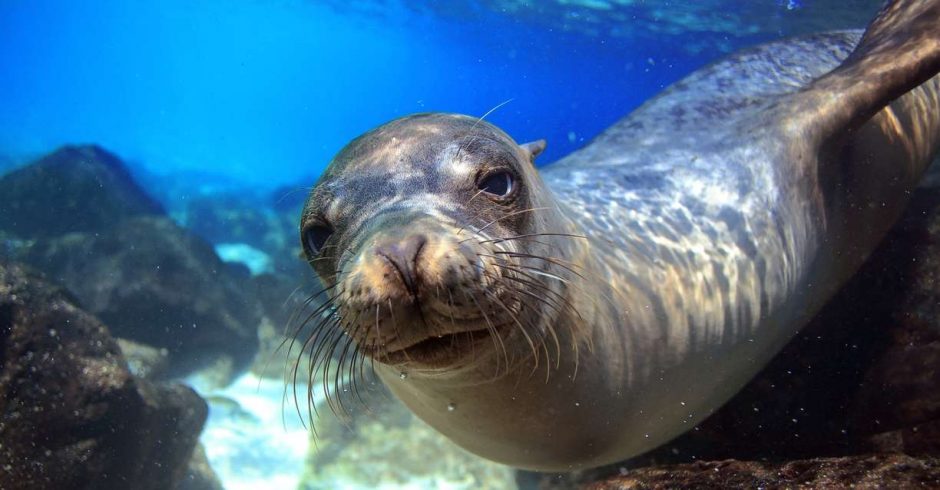
Underwater Photography in the Galapagos Islands
The Galapagos Islands is certainly one of the most fascinating places on earth, and this is true both above and below the water line. While on land you’re likely to be photographing piles of marine iguanas, giant tortoises, lava lizards, and so much more. However there is an underwater world that is equally unique, from frolicking sea lions to swimming sea turtles, to an abundance of colorful fish of all shapes and sizes.
For the avid photographer, you may already have your plan on What Camera Gear to Bring to the Galapagos Islands, but what about the underwater component?
For someone who’s an avid photographer on land, what can that person bring that helps capture life below the surface?
If you google underwater photography in the Galapagos Islands, you’re going to see some sensational photos of perfectly timed manta rays, reef sharks, and fish-eye views of sea lions like in the header photo of this article. And the great thing is that this is indeed what it’s like to snorkel in the Galapagos–in person it is absolutely mesmerizing!
However, it’s key to know that from an underwater photography standpoint, these types of images are the best of the best. Underwater photography isn’t quite like terrestrial photography in that it really is the cream of the cream of the crop that shows up in the headlines. On one hand, this is great, as you can make a name for yourself amidst less competition, for there are just very, very few acclaimed underwater photographers. But realistically, this goes to show you that underwater photography is difficult!
Here is what the typical setup looks like if you want to get what the pros get…

Plan on spending upwards of $10,000 just for the housing and lights…
Now, this all being said, there are still some WILDLY fun moments to capture underwater in the Galapagos Islands. And frankly, I doubt many people are expecting to get the cover of a magazine shot within a few minutes of snorkeling.
For this reason, I encourage you to do something perhaps a little atypical for a photographer–take video!
Video has a way of putting the viewer much more immersed in the environment and in the scene compared to still photography. When faced with ultra challenging photography, in a setting where you really just want to document the splendor of what you’re doing and seeing, what better way to capture it than by video.
Here’s where the latest advent of awesome little “action cameras” come in. You’ve probably heard of them, and maybe even have one. I’m talking about cameras like Go Pros and similar.

Let me just say, I have no affiliation with Go Pro, I just really like what they do for the photographer. They are ultra durable, highly portable, and easy to use. And perhaps most importantly, they are easily used and toted with one hand so that you are more free to swim and explore unimpeded.
In addition, they shoot VERY high quality video with a default fish-eye style lens. This isn’t the time to go into why a fish-eye is preferable underwater, but it has to do with diffraction and how light is bent below the surface…the fish-eye compensates quite nicely for this giving you more natural looking photos.
As an added bonus, you can indeed shoot photos with Go Pro style cameras, and they turn out quite good!
So the moral of the story here is to make sure you go into underwater photography with the right expectations. You will no doubt get sensational photos above the water that could very well go on the cover of a magazine (truly, I’m not being patronizing, the photography in Galapagos is spectacular). But I humbly recommend that for below the surface, you switch tactics, pick up an action camera for a couple hundred dollars, and focus on documenting your experience, as it will no doubt give you a lifetime of amazing memories.
All the best,

Court
3 Comments

Jubilee Shoals
September 30, 2019 at 9:06 am

Diving in Cyprus
December 31, 2019 at 10:14 am

Court Whelan, Ph.D.
January 7, 2020 at 12:21 pm
I hope that you won’t stop writing such interesting articles. I’m waiting for more of your content. I’m going to follow you!
We love your content. Regards from Pissouri Bay Divers from Cyprus.
thanks!